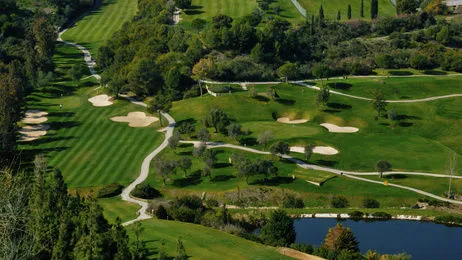
- Share on Facebook35
- Share on Pinterest
- Share on Twitter
Water is a necessity for our survival. In the U.S. and other first world countries, clean water is frequently taken for granted. All we need to do is turn on the faucet and out it comes.
But in some areas of the world, sources of water can be so polluted that people don’t have access to clean drinking water.
According to the World Water Council, more than one out of six people worldwide lack adequate sanitation and nearly 4,000 children die every day from water borne diseases.
The skyrocketing population growth coupled with industrialization and urbanization is resulting in an increasing demand for water which has numerous consequences for humans and the environment. Although water is eventually recycled naturally by the earth, the water cycle takes time, and people are using it faster than the earth is able to replenish it.
One large water guzzler are golf courses. Those brighter than bright greens are beautiful to look at but it takes a lot of water for them to get that way. There are 16,000 courses in the U.S., and the average American course is said to use 312,000 gallons of water every day.
In arid climates, such as places like Palm Springs, home to nearly 60 courses, each uses a million gallons of water a day. That means that every course in Palm Springs uses as much water in just one day as the average family of four uses over a 4-year period.
Only slightly more than 6 percent of those courses are using recycled or reclaimed water. Perhaps that’s partly because, according to Golf Digest, 41 percent of golfers believe global warming is a myth, whereas 27 percent of the general population deny that it’s a real problem.
In some areas of the Southwest, the U.S. Golf Association is requiring the use of recycled or reclaimed water and new grasses are being developed that require less moisture to thrive; over-seeding is discouraged and some courses are being returned to a more natural state with the grass losing its vivid green hue.
If more courses don’t follow suit in going a bit more brown to “go green,” eventually their greens will dry up due to climate change/global warming, despite those who continue to deny that it’s happening.
 While it is true that in some parts of the country, like Florida, golf courses can actually have a mitigating effect on clean water supply by providing a cleansing area during heavy rains, this is not the case in many areas around the country, with the US southwest, as noted, being the most problematic.
While it is true that in some parts of the country, like Florida, golf courses can actually have a mitigating effect on clean water supply by providing a cleansing area during heavy rains, this is not the case in many areas around the country, with the US southwest, as noted, being the most problematic.
Until water shortages impact more people directly, the odds are this precious resource will continue to be mismanaged by most. Of course it isn’t just the golf courses; washing the car, letting the water run while doing the dishes or brushing your teeth, and leaving lawn sprinklers on are just a few of the ways many households waste water.
We just felt that it was important for everyone to know that those pretty golf courses we like to drive by, and many people like to use, are significant water guzzlers. The more educated we become, the better decisions each of us can make in life.
-The Alternative Daily
- Share on Facebook35
- Share on Pinterest
- Share on Twitter

